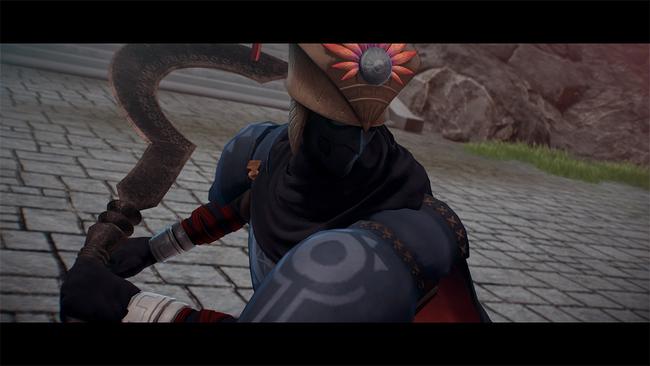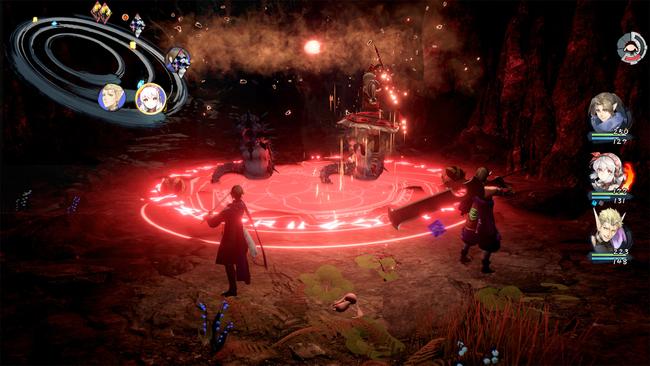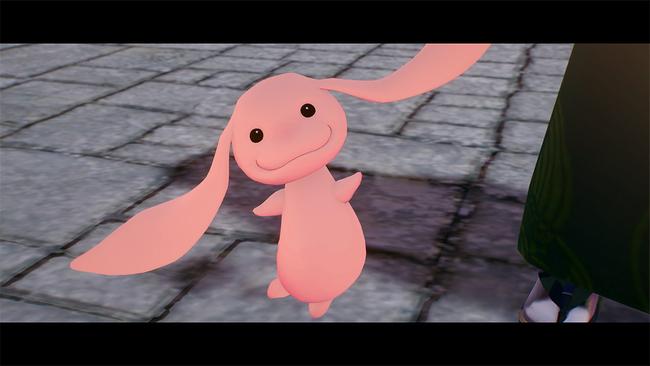
Monochrome Mobius: Rights and Wrongs Forgotten Review
Sitting down having finished it, Monochrome Mobius: Rights and Wrongs Forgotten is a game with a serious identity crisis. Aquaplus’ latest entry in the Utawarerumono franchise awkwardly attempts to straddle the line between a standard prequel, while also setting the stage for future games in the story and world. Combined with a depressing amount of bloat, it’s hard for the game’s strengths to overshadow what ultimately becomes a messy and at times boring experience.
I’m getting ahead of myself; Monochrome Mobius is ostensibly a tale of how Mikazuchi and Oshtor, two major characters in Utawarerumono: Mask of Deception and Mask of Truth ultimately became the Imperial Guards of Yamato. At its core, however, Monochrome Mobius tries to tell a different story of Oshtor’s adopted sister Shunya, their shared father Pashpakur, and the forgotten land of Arva Shulan.
To be clear, there’s nothing wrong with the developers wanting to tell a new story; rather, the problems begin with how neither plot thread feels like it was handled satisfactorily by the end. While Utawarerumono is no stranger to cliffhangers - Mask of Deception is infamous for its own - the way that Monochrome Mobius’ cliffhanger is reached feels less like a natural conclusion for setting up the next step of the story, and more like a disheveled mess of ideas as some doors seem to be definitively closed while others are haphazardly held open by an 11th hour reveal.

To go into any more detail would be to spoil exactly what the game’s story entails - besides, of course, Mikazuchi and Oshtor eventually receiving their posts as Imperial Guards. While there are elements of the game’s story that deserve merit, the pacing and eventual conclusion make it difficult to argue that the narrative is especially strong; and this goes double if you aren’t already familiar with Utawarerumono as a whole. You can totally play Monochrome Mobius as your first entry in the franchise, but to say that the game itself expects the players to be familiar with the series as a whole is a bit of an understatement.
From a gameplay standpoint, Monochrome Mobius differentiates itself from prior Utawarerumono projects by being a turn-based RPG instead of a tactical RPG & visual novel hybrid. As a result, aspects of the game’s presentation have seen a noticeable uplift; locations all have a sense of scale to them which is especially impressive considering the title is Aquaplus’ first real attempt at making a modern console JRPG. It’s worth reiterating that although the PlayStation 4 and PlayStation 5 versions of the game have not been localized, the game was still clearly developed with a console audience in mind.
Monochrome Mobius’ battle system is a mostly standard turn-based affair, with one of its main gimmicks being the Battle Ring; at any given time your party and enemies will appear on the ring, and via the use of specific skills, Overzeal, and attacking staggered units you or the enemy can ascend or descend to different layers of the ring. Turn order is handled by a combination of a unit’s speed and which ring they’re currently running along. Rings closer to the center require less of a cooldown between attacks - a shorter racetrack so-to-speak - which means that units can theoretically continue to act at a much faster pace than those that might find themselves on the longer outer ring.

This all sounds cool, and on paper it is, but the problem arises when you realize that actually moving from one ring to another is difficult to plan around. There’s no indication of how close a unit is to staggering; the meter itself exists by the game’s own admission, but it’s simply invisible, making it near impossible to plan your maneuvers around units reaching their stagger state. The overall user interface for combat could use some work outside of this problem as well.
Enemy and ally icons can occasionally find themselves overlaid over each other if they reach a point in the ring at the same time. There’s no way to tell which of them, in particular, will move first. By the end of the game, your playable characters will have dozens of abilities at their disposal, but at any given time, you’ll only actively want to use a couple of them. It’s not uncommon, however, that the skills you’ll find yourself using the most will require multiple inputs to highlight and select. As enemy encounters find themselves bloated with more and more units on the battlefield later into the game, it can make normal, non-boss encounters feel like they take forever. The lack of any toggle for battle speed makes these issues stick out like a sore thumb.
For the first half of the game, when both the story and the gameplay moved at a steady clip, I was enjoying Monochrome Mobius a great deal. However, the game’s pacing slows to a crawl the moment you find yourself with your full party. Between the issues with gameplay pacing, dungeons that never quite get interesting, and a story that feels like it loses control of itself in the latter half of the runtime, it’s hard to walk away from the experience without feeling mixed about the companies first attempt at a traditional JRPG. Don’t get me wrong, there are aspects of Monochrome Mobius that are impressive. The world’s scope and scale were at times its greatest strength, even if ultimately the world’s size and limited fast travel became a part of the title’s pacing issues. The battle system, with a few crucial tweaks, feels like it could really come into its own in the future.

I wish I could recommend Monochrome Mobius to anyone but the most diehard Utawarerumono fans, but at the end of the day, I’m still hesitant to give it my recommendation to existing fans of the series, either. When I talk about my issues with the pacing, I even gloss over how players are regularly expected to deposit large amounts of materials into Investing in upgrades for their equipment, Halu’s combat capabilities, and a selection of ABL upgrades that go a long way to improving the game’s user experience. For every aspect of Monochrome Mobius that I outright enjoyed, I find myself remembering another aspect that actively hampered the enjoyment I was having.
To end off on a positive note, the game works great on Steam Deck, which is where I spent the vast majority of my playtime. The only exception to its locked 720p30FPS presentation on medium settings - which, to note, genuinely impressed me from a visual standpoint on the handheld - was a handful of specific dungeons in the mid to late-game. Even then, it stayed completely playable, to the point where I would actively recommend that any Utawarerumono fans that want to engage with the game should do so on Steam Deck if that is an option for them. It’s a great fit for the game as a whole.
I wanted to enjoy Monochrome Mobius more than how things turned out. I think I still enjoyed my time with it as a whole, but the best thing I can say about the experience is that it’s a promising first attempt at Aquaplus expanding their development capabilities and that many of my issues with the title can easily be fixed with the eventual follow-up. I want to hope that the next title can be something truly special; Aquaplus is a company with a storied history, and I want nothing more than to see them successfully take that next step in expanding. Monochrome Mobius just wasn’t quite the game I’d hoped it could be.